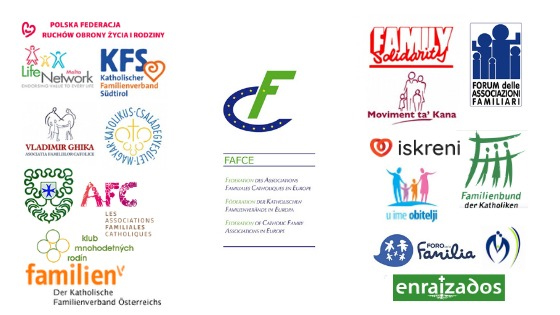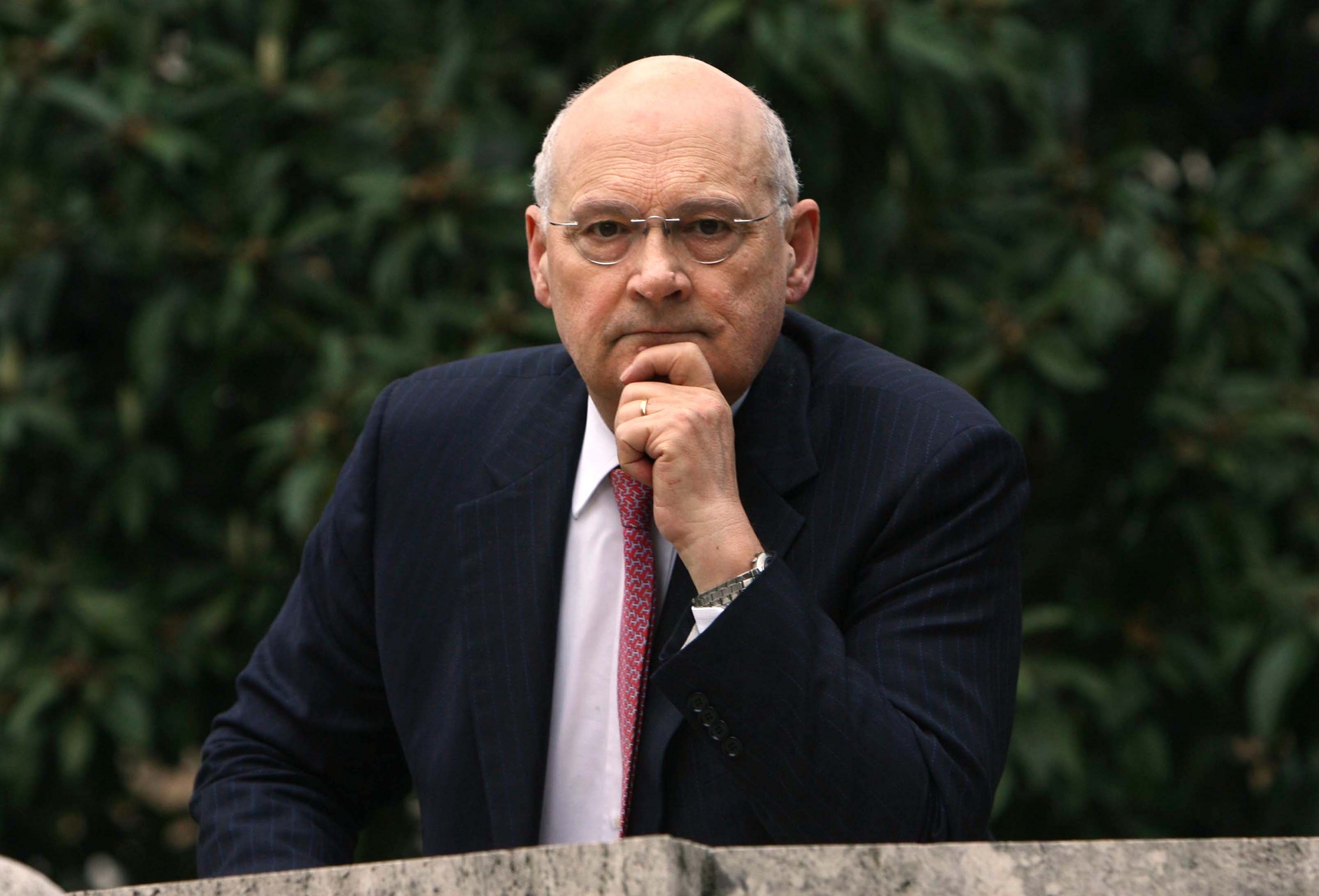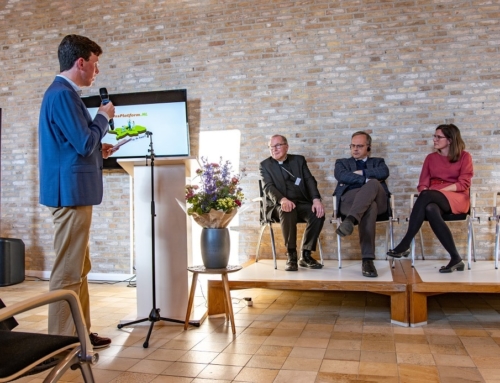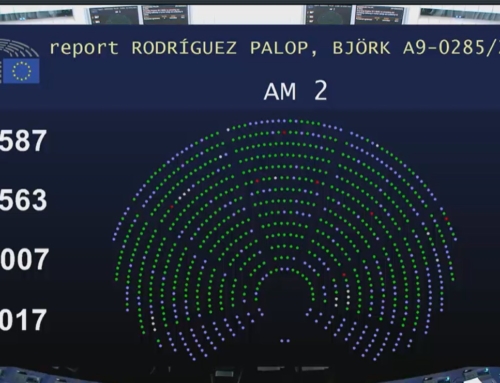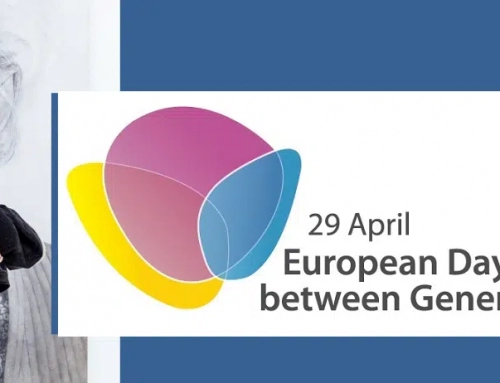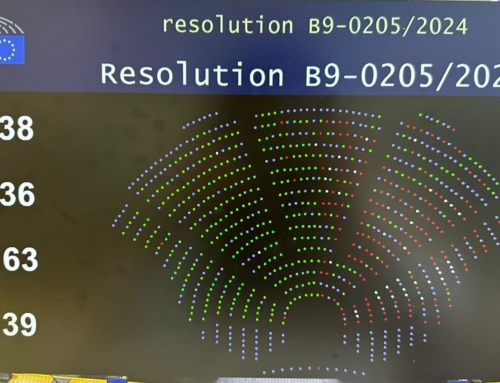Stefano Zamagni
Università di Bologna and Pontifical Academy of Social Sciences
1. The family is in harmony, and therefore it is a place of happiness, when gender differences become an opportunity for mutual enrichment and not a way of justifying various forms of discrimination. A woman who wants to become a mother and who intends to remain employed is certainly interested in family-friendly work policies. What interests her even more is that her husband can (and not just has the intention to) share the happiness and fatigue of household chores and, in particular, their children’s education, who – never forget – need equal amounts of maternal and paternal charisma for their adult development. Consider what is happening in our society due to the growing marginalisation of the father figure in children’s education. Firstly, we need a “cultural revolution” to solve today’s family problems. As Benedict XVI stated in his speech to the congress of the Pontifical Council for the Laityin February 2008, on the twenty-first anniversary of the Mulieris Dignitatem, we urgently need to “study in depth the anthropological truth about men and women, the equal dignity and unity of both, the deeply-embedded diversity between a man and woman and their commitment to reciprocity and complementarity, to collaboration and harmony”. Diversity, reciprocity and complementarity are the key words to emphasise.
In practical terms this calls for a transition from ‘gender mainstreaming’ – a notion adopted in the Treaty of Amsterdam in 1997, according to which more measures have to be put in place aiming at creating equal opportunities between genders – to ‘family mainstreaming’, according to which interfamilial relationships are the ones which must be given the most attention when dealing with the reorganisation of the institutional structure. A specific subject is that which concerns the vexata quaestio of the ‘new family’ or rather the ‘new unions’ (post-modern families). Regarding such questions, the media and, above all, cultural debate is disproportionately broad in relation to the actual extent of the phenomenon. As we well know, this is due to the fact that the subject of new family types is doubly connected to the current gender theory (ideology?) that deprecates heterosexual teachings. In regard to transgender feminism – that arrived after the equality feminism and the identity feminism – and its impact on the idea of family, the debate is now more heated than ever.
As highlighted, the key thesis of the gender theory is the absence of a two-way link between biological sexuality and sexual identity. What is the basis for a theory on such an issue? There are two main answers. In one sense, that of post-Marxist and radical feminism according to which the differences between a man and a woman are a social construct that, as such, can be dismantled because they generate exploitation. In another sense, the transgender feminism reply, which states that gender is simply that with which an individual identifies, or better put, decides to identify with. Since the World Conference on Women in Beijing 1995, the concept of gender identity entered into official UN documents in matters relating to the fight against gender discrimination.
2. The gender agenda is creating serious consequences for the family. One of these consequences concerns the increasing number of forms families are taking, to such an extent that the coexistence of different types of family is now recognised in official documents of bodies such as the United Nations, the European community and the judicial systems of some countries. Such a phenomenon creates a problem that cannot simply be put aside because one wrongly thinks that it is irrelevant. The problem lies in establishing criteria in accordance to which the dominant family model some decades ago – married heterosexual couples with their own children – can be distinguished from other forms of cohabitation and social unions. We can see that an unavoidable task has appeared: both for those who believe that the traditional family continues to be an essential point of reference for social order and therefore deserves a special legal status and consequently particular attention on a social policy level; and for those who, on the contrary, believe that it is the right time to try ‘an assault on the sky’ – to overcome each division and each distinction where family is concerned.
Those who identify with this latter position make reference to the statement made by John Rawls (1994), according to whom: “No particular form of family (single-parent, heterosexual or others) is demanded by a political understanding of justice provided that families are organised to effectively fulfil their basic tasks and don’t chase other political values”. The tasks which the famous American philosopher is referring to are those to fairly provide love and trust in a relationship and to protect children from abuse, providing them with the necessary education.
The message is clear. Once the key value that supports the public sphere is Justice as fairness, as long as the social group that one calls family fulfils its said tasks, the choice of a particular form of family is left to individual determination, since the type of family, not having public relevance, only concerns the private sphere of single people. Clearly, to defend a gender theory, it is always necessary to put criteria in place, upon which it can be established whether it is true or false that amongst diverse forms of family exist relevant differences that concern the public sphere. In other words, are we certain that with regards to the tasks of educating their children, fairly providing love and trust in relationships, there is not a substantial difference between a family type and another?
In the Italian case, the search for a criterion, that can be used to fix the fundamentum divisionis between a so-called traditional family and other ways of living together, is even more necessary due to a simple and crucial reason regarding our constitutional structure. I allude to the fact that, in contrast to what is happening in other developed Western countries, our Constitutional Charter dedicates three articles to family: 29, 30 and 31. Here is Article 29: “The Republic recognises the rights of family as a natural society founded upon marriage”. “Recognise” is the fundamental term here: the State does not allow nor authorise the family, but rather recognises what already exists, meaning that the family predates the State. The reference to a “natural society” implies that belonging to a family comes from being born into it, not from free choice. It is this element that sanctions a half judicial character for the family structure that finds its origins in marriage. It is marriage that creates the family and gives it colour. Article 31 is particularly relevant for current objectives: “the Republic supports, with economic measures and other blessings, the formation of family and the achievement of related tasks, with particular attention to large families. It protects maternity, childhood and adolescence by supporting the necessary institutes to this aim.” It is here clear the favor familiae (supporting families) of our constitutional text. Supporting families is neither generic nor purely moral, but it refers back to “economic measures” and ad hoc legislative and regulatory interventions. Observe that the inclusion of the family within the Constitution is something that should not be taken for granted if we consider that the Statuto Albertino of 1848 does not mention it and if we also take into account the fact that Articles such as 29 and 31 cannot be found in any other modern European Constitution.
Now, it really is this specifically Italian particularity that is shining a light on a paradox of a basically political nature. Although the constitutional text draws attention explicitly to family policies, it is a fact that such an arrangement has remained, in essence, ineffective. We could object by citing a long list of approved measures, for example: the law of 1960 on equal pay between men and women; the law of 1971 on the protection of maternity leave for working employees; the reform of family rights approved in 1975, that introduced equality between the sexes in a family, giving both of the spouses parental authority over their children; the law of 1977 on equality at work between men and women; the law of 1991 on equal opportunities in the work environment for workers and professionals; the law of 1996 that created new regulations concerning sexual violence no longer being considered a moral offense but an offense against the person; the law of 2000 on parental leave that also extends the care of newborns to fathers; the law of 2001 that introduced new measures against domestic abuse; etc.
There is no doubt that we are at the forefront of legislative measures that signal important emancipating achievements, especially independence and freedom for women. But in another instances they don’t touch or look in detail at the family as a social institution. How do we explain therefore the paradox of such a marked discrepancy between declared principles and policy lines? The response that is often given is that the memory of fascist legislation, that strongly supported families and birth rates, has functioned as a deterrent against implementing family policies. One will remember that the fascist regime had enslaved the family in benefit of the State, as far as to enshrine the duty of parents to educate their children in accordance with the “fascist national sentiment”. (Article 147 of the 1942 Civil Code in the original text).There is definitely truth in such a response, but the explanation is only of some benefit to explain what happened in the first ten years of the Italian Republic, when the memory was still fresh in the minds of the majority of the population. I am of the opinion that there are more relevant reasons that can account for the paradox presented.
These are connected to an inadequate conceptualisation of the topic of family and therefore the difficulty in identifying criteria upon which we can answer the question of what is the family.
3. A whole group of reasons, that account for the difficulties in finding a consensus regarding a definition of family, are politico-cultural in nature. These are the issues. As D’Agostino (2008) clearly said: there are two archetypal family models that, in recent literature, have been taken to represent the family. On the one hand, the model that sees the primacy of the family as a collective entity over its members and establishes gender differences as a fundamental aspect of marriage. On the other hand, the model that sanctions the primacy of the individual over the family and that considers the sexist logic to be outdated. We talk, with some degree of inaccuracy, about a traditional family while referring to the first model, which would be a type of community-based structure, and a modern family regarding the second model, of an individualist structure. Despite the marked differences, both models suffer from the same problem: their reductionism. Indeed, if one model privileges the institutional dimension to the detriment of the personal one, the other model highlights the utilitarian components – individual interests of spouses and children – but does not see the good of the family community in itself. It is true that the institutional dimension of the family is a virtue in itself that is upheld because it guarantees the durability and stability of the family; but it is also true that even the request for protection and promotion of the individual by the family is a virtue that must be protected.
So, the division between patriarchal families and middle-class individualistic families has finished with the continuation of family policies that are inadequate for meeting the objectives and contradictory. Let us consider, as a relevant example, the fiscal regime, where the debate is being discussed more than ever. Why should it ever be necessary to use the family quotient when discussing income tax if the family is patriarchal or if it is merely a centre of individual interests? In the first case, it will have to be the “patriarch” paying for the consequences of his life choices; in the second case, it will be contractual relationships between family members controlling respective interests. If one reduces the family down to a mere centre for protecting interests – either of the “head of the family” or of single members – it loses its focal point. Not so long ago, this loss was happening because patriarchal nature had become irritating. Today the family is losing its focal point because we think of protecting single members (whether it be a parent or child), leaving aside the family and sometimes opposing it. (Note that the reform of Italian family legislation in 1975 adopted, in essence the individualist conception).
This is why those who have at heart the objective to relaunch the debate on family policies – most importantly one that focuses on the harmonisation between family and work – cannot avoid striving to go beyond the strong division between the two ideal-typical models, both of which come with their own doubts. It is necessary, therefore, to show that institutional and personal dimensions can go together. But to attempt an operation of this type it is necessary to take the bull by the horns. What is needed is a decision to be made with regards to the fundamental element which Donati calls the nucleus of the family. What do we mean by family? What elements define its original structure? We are persuaded that the majority of arguments and misunderstandings, that present themselves precisely when we are trying to participate in designing a new family welfare system, are ultimately derived from the fact that we have not yet come up with a substantial definition (and not just a formal or judicial definition) of family. The reference to Article 29 of the Constitution is inadequate for such objectives.
The consequence of such a gap is that in practice, it always finishes by one position prevailing, in as many words, in the form of a pragmatic drive: depending on the specific problem that you have to face – protection of minors as opposed to dependent elderly people; protection of women rather than men; and so on – each time one refers back to the most convenient definition: from statistical to judicial; from religious to psycho-sociological, etc. In other words, families could be any form of cohabitation that individuals choose to adopt: the “families of choice” as they are called in Anglo-Saxon literature. Charles Taylor (2009) brilliantly demonstrated that the transformation, gradually achieved in the post-Second World War period, of the principle of equal dignity of all human beings into the right to see their own characteristics recognised, or rather their differences, however these differences manifest themselves, has led – perhaps unknowingly – to the acceptance that non-marriage partnerships, of one sort or another, are placed on the same level as a real family. But what is a real family?
4. For Donati, four fundamental elements characterise the nuclear family, that is to say the hidden structure that brings out this specific social relation that is the family relationship in its true sense. This is about “gift”, “reciprocity”, “generativity” and “sexuality” as love between man and wife. The family is therefore a life community in which these four elements are combined according to the way of the cross.
The man-woman complementarity that spans sexuality is not a psychological process that occurs inside a person, but a real connection that develops between two people of a different sex. As read in the Lettera ai Vescovi Cattolici sulla collaborazione dell’Uomo e della Donna nella Chiesa e nel mondo (Letter to the Catholic Bishops on the Collaboration of Men and Women in the Church and the World), compiled in 2004 by Ratzinger, cardinal at the time (and approved by the Pope):
“The human creature, in its unity of soul and body, is characterized therefore, from the very beginning, by the relationship with the other-beyond-the-self. This relationship is presented as still good and yet, at the same time, changed. It is good from its original goodness, declared by God from the first moment of creation. It has been changed however by the disharmony between God and humanity introduced by sin. (…) In the course of the Old Testament, a story of salvation takes shape which involves the simultaneous participation of male and female. While having an evident metaphorical dimension, the terms bridegroom and bride – and covenant as well – which characterize the dynamic of salvation, are much more than simple metaphors. This spousal language touches on the very nature of the relationship which God establishes with his people”.
The foundation of the conjugal relationship is therefore in the recognition of the incompleteness, of both males and females. It is this which makes it necessary to take precise actions and regulated interventions to allow the complementarity principle to achieve all of its potential. In other words, it is not enough to recognise the complementarity to see it achieved in practice. Indeed, in the absence of a precise strategy, the real connection can become a destructive spiral, something that nearly always happens when the man’s presence brings out the woman’s negative points related to her incompleteness and vice versa. Here is another passage from the recently mentioned Lettera:
“From the first moment of their creation, man and woman are distinct, and will remain so for all eternity. Placed within Christ’s Paschal mystery, they no longer see their difference as a source of discord to be overcome by denial or eradication, but rather as the possibility for collaboration, to be cultivated with mutual respect for their difference.”
If managed correctly, the difference between genders then becomes complementary differentiations and not tension that leads to conflict. This is why we have talked about the way of the cross. This is particularly necessary in families with children, who can only find a fully humanising environment where they find both maternal and paternal relationships. Indeed, don’t forget that the family, through the couple that founds it, is the place, not only of life’s biological generativity, but also the place that provides protection of human life expressed in the form of civilisation. Therefore, the family exists in its completeness when it is structured around the man-woman complementarity, and jointly, around the generational complementarity.
5. To present the family as a community life centred on gift, reciprocity, generativity and sexuality implies overcoming both the bourgeois individualistic model and the patriarchal one. Conveniently, D’Agostino points out that while the bourgeois Enlightenment does not succeed in making space for the logic of gifts, from the moment that agape love presumes this (philia love not being sufficiently robust to support the principle of the gift as a symbol of gratuitousness), the patriarchal model does not recognise the real concerns of conjugal love because it subjects love to values considered as superior such as solidarity within the family and generational dependency. Where does the characterisation of the nuclear family as explained above lead to, on a practical level? It leads to see on the family a common action.
As Viola suggests, there are three elements to identify common action. The first is that a conclusion cannot be made without all those taking part being conscious of what they are doing. More people simply gathering or finding each other again is not sufficient. The second element is that each common action participant retains their position in the family and therefore the responsibility of what they carry out. It is this element that differentiates between common action and collective action. In the latter, individual identity disappears as does personal responsibility. The third element is the combining of forces for common action in order to achieve a common goal. The interaction between more individuals within a given context is not yet classed as common action, if they are chasing different goals. Having these three elements, the family really is a common action.
Nevertheless, there are many different types of common action in practice – and therefore different types of family – in relation to what makes the object of the community. In fact, it may concern only the means or go as far as the goals themselves. In the first case, the family reduces itself to little more than a type of mutual help society and the form that the intersubjectivity takes is typically that of a contract. As we know, in a contract the parties must contribute to its complete fulfilment, but each person follows their own goals which are often opposing. (One thinks of the example of what happens in an employment contract). Instead, when community life is extended to the goals, one has a family as a common human good. We can see that there is a difference between the situation in which we share with a group of people so that each person can follow their own goals and the situation in which we have a common goal, with a group of people, that can be shared.
What is the consequence, economic or socially speaking, that is derived from the distinction made, which then reverberates into the design of family policies? That when the ‘common’ part of the action is reduced to become only a means to do something, the problem that needs resolving is substantially that of coordination of actions by a certain number of individuals. As we will see in the next chapter, that is what is provided by family and work reconciliation policies. On the other hand, when the ‘common’ part of the action also extends to the goals, the extremely more delicate problem that needs to be resolved is how to achieve cooperation which constitutes the proprium of harmonising policies. In other words, a coordination problem originates in the strategic interdependence of many individuals; a cooperation problem, on its turn, originates in their axiological interdependence. That is to say, in cooperation, intersubjectivity is a value because a real good is inscribed in the being-with. In coordination, on the contrary, intersubjectivity is a circumstance, sometimes even vexing. Therefore while coordination does not require discursive communication between the individuals concerned (because for each one of them it is enough to know what the others are going to do to achieve their own projects), in cooperation, those linked together, have to talk amongst themselves, exchanging “moral information” in the hope of adjusting their contribution to the common action.
What can be done to positively resolve a cooperation problem and therefore to experience a common human good that resides in the family community? There are three conditions. Firstly, each common action participant – meaning each family member – accepts as important and worthy of respect the intentions of other members, knowing that they will do likewise. It is this that the English philosopher Bratman calls a condition of mutual responsiveness: it is not sufficient that family members intend to carry out the same activity: it is also necessary that they want to do it together. Secondly, each person commits themselves to a joint activity and also knows that the others intend to do the same. This is the commitment to the joint activity, according to which each person commits herself even though they know that it is impossible to determine exactly the contribution of each member to the final result. Finally, there is the commitment to mutual support: each person commits herself to help the others during the unfolding of the activity in question, not to the end goal itself, as it happens with more or less forced paternalism. Help is given to improve the talent of whoever needs it, not to solidify hierarchies based on merit.
Satisfying such conditions presupposes that, in the beginning, a requirement is found by consensus by the family components, namely that the position of command, which is always necessary to make individual wishes converge, is carried out by the person who shows to be capable of authority and not by the person who claims the leadership position based on hierarchical reasons. Authoritative (from the latin augeo) is the person who is able to make others grow, having charisma. There is still a misunderstood idea of authority at the base of patriarchal conceptions of the family according to which it should be entrusted, ratio naturae, to the husband. This is a position with no foundation which also causes countless conflicts.
A question spontaneously arises: how is it possible that the modern society which is increasingly drawn to “individualising the individual” – as Baumann expresses it – succeeds in conserving family identity, warding off the risk of change to its very nature? In the current context, deeply marked by phenomena such as globalisation and the third industrial revolution, can we think (and hope) that, through the preparation of adequate family policies, we can succeed in maintaining family citizenship, a citizenship that the European Union has still not recognised, although it has recognised corporate citizenship a long time ago? The theory that I defend is that only an internally strong family – that is capable of harmoniously keeping together the four elements previously mentioned – is in the position of exerting a certain contractual power on disputes with businesses or the State. It is perhaps due to such fear that the dominating culture favours the trend of the rift occurring between man and woman in name of the singleness myth. The objective is clear: to weaken the family actually means to dominate and subdue it to partisan interests. As the functionalism wants, the family is thought of as a sphere mandated by the society to perform certain functions, which, as they have meaning in themselves – we think about policies against poverty and against social exclusion; about policies for children, the birth rate and dependent elderly people; about gender policies – do little to contribute to reinforce and regenerate the natural family form.
6. In two essays from some years ago, that caused a stir in the Anglo-Saxon public debate – one by David Popenoe, the other by Judith Stacey – a strong argument was defended, which pursues the following line of thought. Initially they tried to show that in all modern societies the family is in decline in five specific ways: it is less orientated by the past towards objectives of a collective nature; it has nearly stopped carrying out traditional functions like reproduction, control of sexuality, the socialisation of young people; it has lost power in relation to other institutions like the State, the school and the church; it has become unstable; and its links with single individuals is growing weaker. From here one goes on to conclude that the modern family (stable marriage, man as the breadwinner and woman as housewife) is giving way to a collection of diverse, often fragile domestic arrangements that make up the post-modern family: single mothers; blended families; cohabiting couples; homosexual couples. The post-modern family would therefore be adapted to complying with the requirements of both the post-modern economy and post-feminism. “The family will not exist forever”, writes Stacey, “and we should not wish for this to happen. On the contrary, I believe that all those who feel democratic (…) should try to accelerate the decline of this institution. The family removes and devalues a wide array of possible connections”.
Fortunately, reality took charge of uncovering the theoretical implausibility and the lack of practical foundations of such a theory. Clearly the two authors have skipped the final act of the play and applauded too early. It is not that statistics do not show any worrying signs with regard to the crisis of the family, as we have already amply provided; but statistics themselves do not mention anything that would support the theory mentioned above. It would be a logical non sequitur to conclude that the family is destined to disappear.
Before coming to a conclusion, a brief comment on the generativity aspect of the family. Interpreting the family as only a generator of new lives is an oversimplification. It is noted, in fact, that the Catholic Church has always considered marriage as permanent, even when the spouses are not able to have children. Conversely, there has always been the generation of new lives outside of marriage. The deeper meaning of generativity within the family is concerned with companionship, constancy, patience, the continued practice of the relationship that a family is capable of achieving. Otherwise we would not understand why there is always a particular meaning attributed to family stability (that Catholicism promotes to indissolubility). The creation of a new life is never an action reserved to a single moment in time, but it is a long and complicated journey that eventually bears mature fruit. It takes a lot for a family that continues over time to achieve this generativity and to teach it to the new generations. Even if there are no children in a family, its generativity is carried out in the progress of the spouses, in the constant mutual help in advancing towards a fuller and more mature personality. The loss of this concept of generativity is at the origin of postponed marriages, even by those who intend to get married. We no longer believe that through marriage spouses’ individual capabilities can be improved, as well as their economic resources. Marriage is experienced as a destination and not as the starting point towards new and ambitious goals.
In the Apology of Socrates, Plato writes that, not long before dying, Socrates went to his accusers and imparted the following message: I know that I am right, but only now I realise that I have not succeeded in convincing you because we have not lived together. As if to say that in order to convince we need to coexist. This is exactly what is happening in families.
